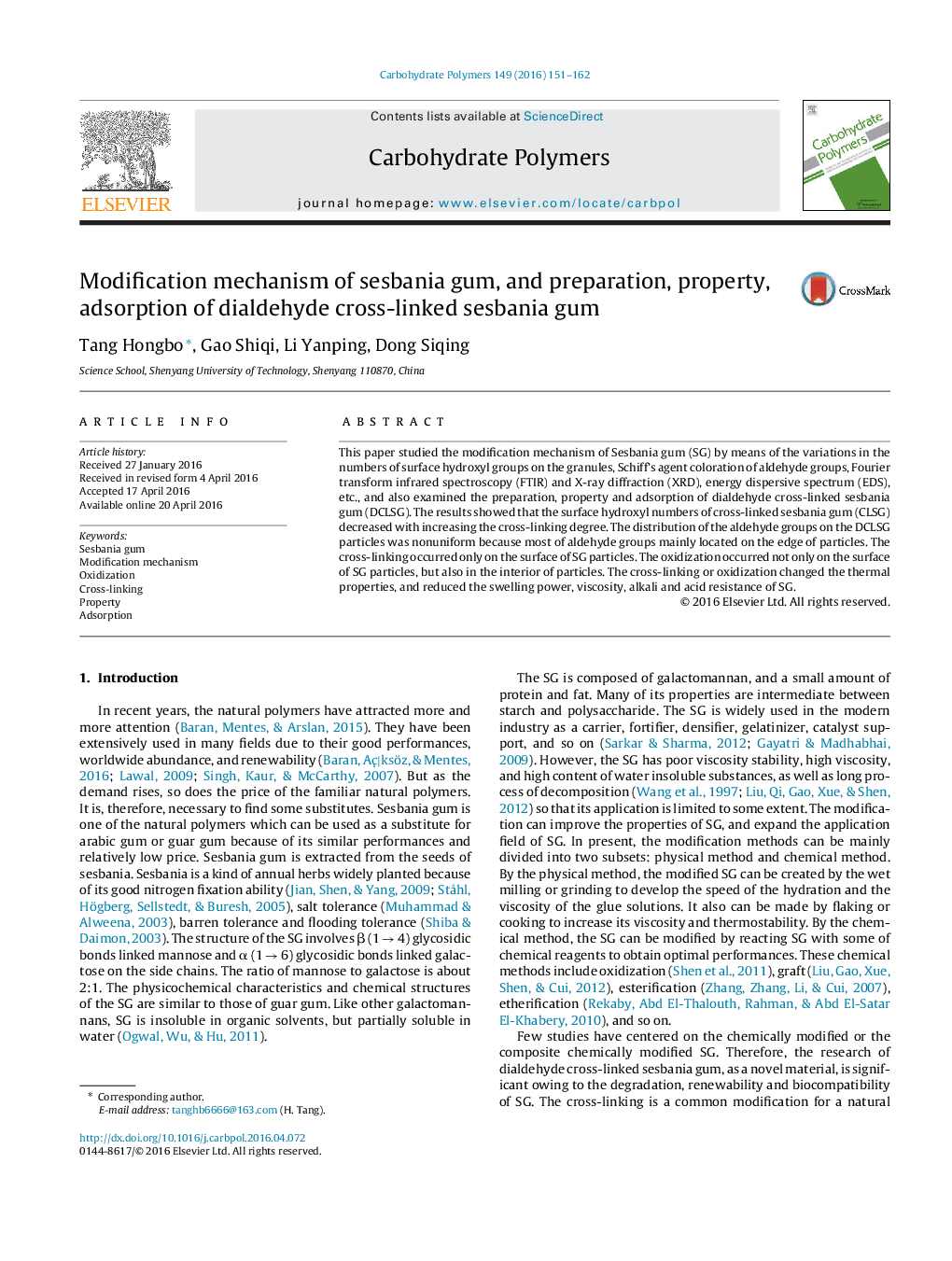| Article ID | Journal | Published Year | Pages | File Type |
|---|---|---|---|---|
| 7785418 | Carbohydrate Polymers | 2016 | 12 Pages |
Abstract
This paper studied the modification mechanism of Sesbania gum (SG) by means of the variations in the numbers of surface hydroxyl groups on the granules, Schiff's agent coloration of aldehyde groups, Fourier transform infrared spectroscopy (FTIR) and X-ray diffraction (XRD), energy dispersive spectrum (EDS), etc., and also examined the preparation, property and adsorption of dialdehyde cross-linked sesbania gum (DCLSG). The results showed that the surface hydroxyl numbers of cross-linked sesbania gum (CLSG) decreased with increasing the cross-linking degree. The distribution of the aldehyde groups on the DCLSG particles was nonuniform because most of aldehyde groups mainly located on the edge of particles. The cross-linking occurred only on the surface of SG particles. The oxidization occurred not only on the surface of SG particles, but also in the interior of particles. The cross-linking or oxidization changed the thermal properties, and reduced the swelling power, viscosity, alkali and acid resistance of SG.
Related Topics
Physical Sciences and Engineering
Chemistry
Organic Chemistry
Authors
Tang Hongbo, Gao Shiqi, Li Yanping, Dong Siqing,
